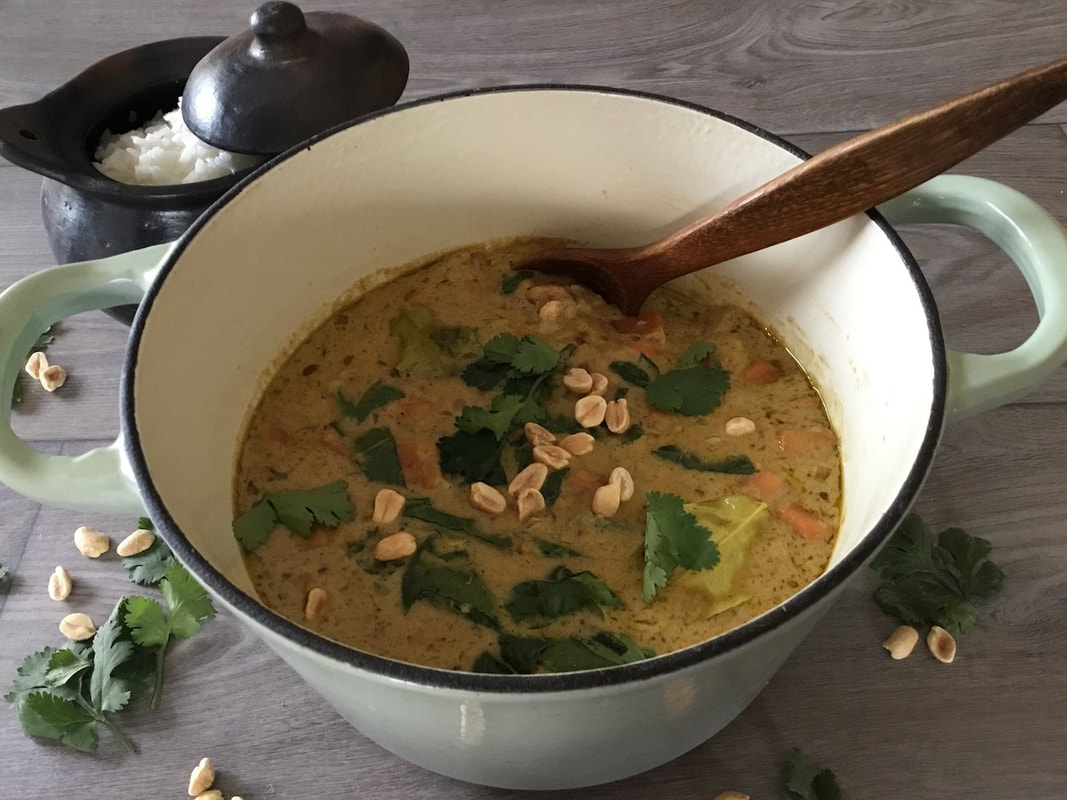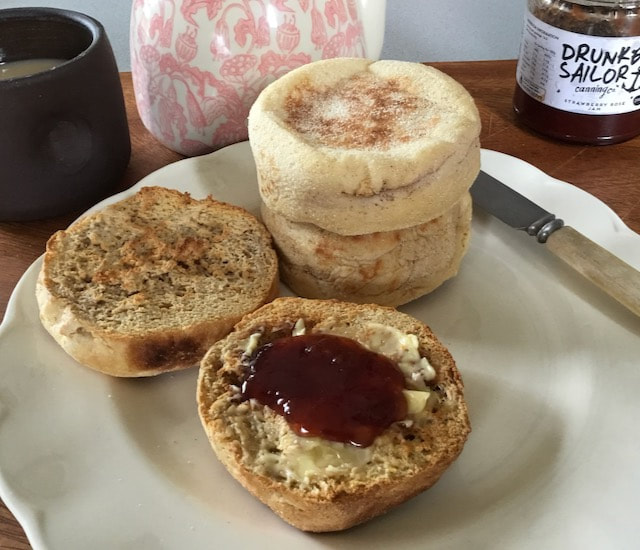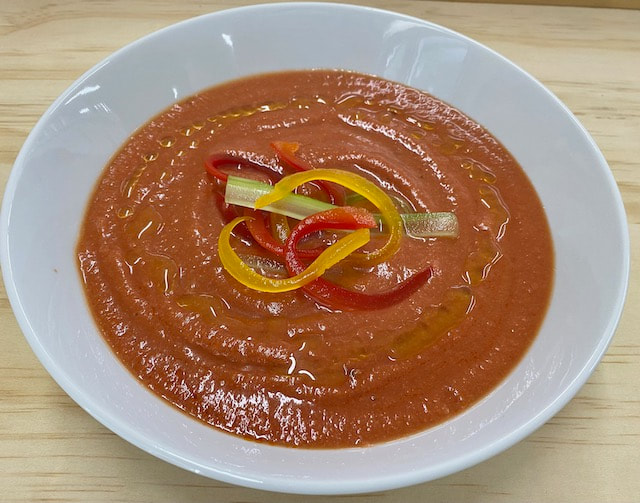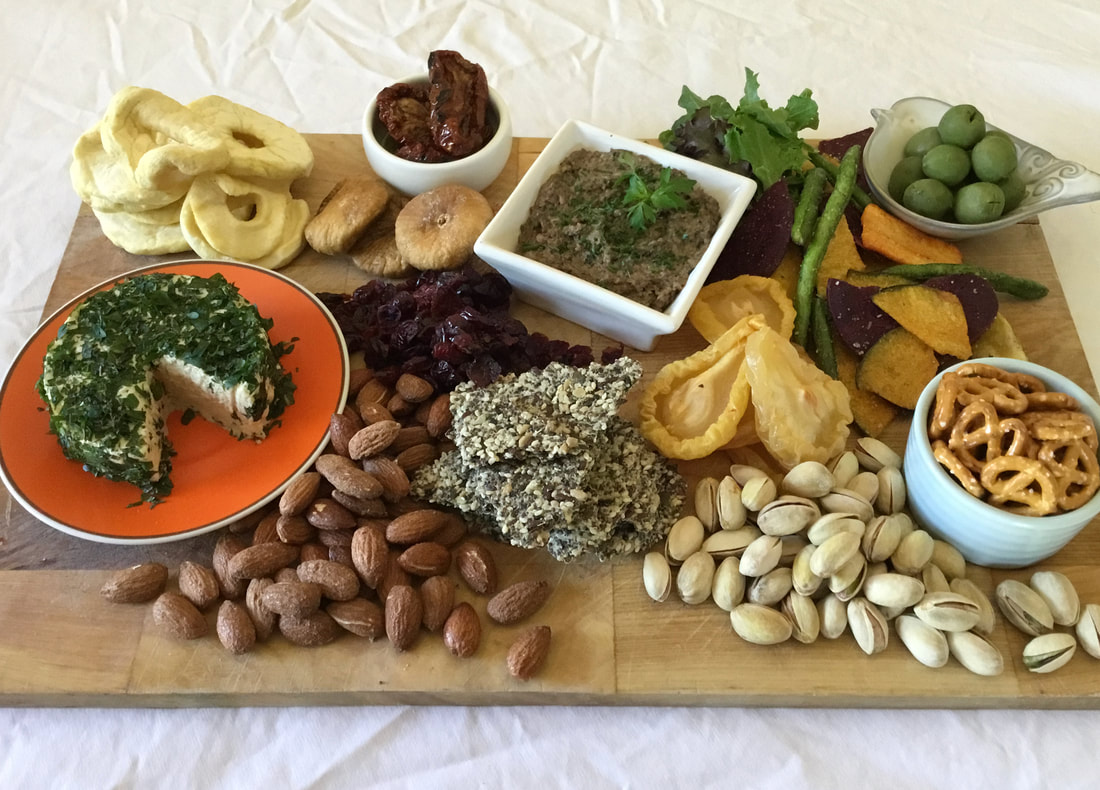|
It's hard to beat a nut-laden curry.
Whether it's a cashew-rich Korma or a traditional West African Peanut soup, nuts incorporated into a spicy sauce always makes for a sumptuous and satisfying meal. I love this take on a classic Thai Red Curry.The addition of sweet potato and peanuts works so well, it's like it was meant to be. I'm keeping things simple by using a quality, shop-bought red curry paste. Feel free to make a paste from scratch, or just use your favourite brand of pre-made. I used our fresh, made-in-store peanut butter and the flavour and texture of the end result was unbeatable. Growing up, I was the designated cook in our small family from about the age of 14. My dad's New Zealand roots means he can never have enough sweet potato (or kumera) and he'd be very happy eating it with every meal! I learnt to come up with a wide variety of sweet potato recipes. This one remains a firm family favourite. We hope you love it too! A note about fresh coriander: I always use the long green stalks of the coriander, not just the leafy bits towards the top. Finely chopped and fried off with your other aromatics like ginger and garlic, coriander stalks add so much depth of flavour. Remove and discard the very bottom roots, give the coriander a good wash under the tap as dirt gets trapped in the stalks. Reserve the leafy parts for garnish and finely dice the green stalks.
0 Comments
A customer recently popped in to get ingredients for making English muffins, and asked what they were traditionally dusted with. I admitted that I hadn't a clue, and advised, with not much conviction, to try semolina.
I realised that not only had I never made English muffins from scratch, I'd never even thought of doing so. Yet suddenly it was at the top of my to-do list. That evening I consulted the great Google and learnt that yes, English muffins are dusted with semolina. However, many recipes called for polenta, regular flour, corn meal or farina cereal. Just to confuse things further, all of these online sources were adamant that theirs was the only proper English way. As it so happened, I had both semolina and cornmeal in my pantry, so I decided to make a batch right away, dusting half with semolina and half with corn meal. The results were basically identical, although I do like the speckled golden edge of the corn meal ones best. Flavour-wise, there was nothing in it. So here it is, our English muffin recipe, cobbled together from the knowledge I gleaned online from two British bakers plus the results of my own tinkering about. I was delighted by both how easy they were to make, and how deliciously authentic they tasted. They're truly delicious with both savoury and sweet toppings. We enjoyed a freshly made one with jam, then froze the rest before toasting them two days later as the base for a delicious Eggs Benedict. While tabbouleh traditionally uses cracked wheat (called bourgal or bulgar), ours calls for millet. This not only makes it gluten free, it really shows off millet's capabilities of absorbing flavours beautifully whilst staying fluffy and light. This is an important factor, because so often Sydney summers mean that our salads don't maintain their vibrancy after half an hour spent on the picnic rug or BBQ buffet. Not so with millet tabbouleh; it maintains that freshly made quality for longer.
You'll also notice this Tabbouleh recipe asks for za'atar. It's by no means a traditional Tabbouleh ingredient, but I find it really lifts the whole thing and delivers depth and interest. So come on a little millet adventure with us. We have my 14yo to thank for this recipe. Whilst "Mum, can we try making gazpacho this weekend" is not the usual thing to be uttered by a teenager, it's right on brand for Sam. He's a history and geography buff, and lately he's been delving into Spain and, specifically, the southern region of Andalusia. Gazpacho is a chilled tomato soup which is a popular staple in the southern parts of Spain. It's a thin soup made with tomatoes, capsicum and cucumber. Knowing my kid's passionate aversion to capsicum I suggested we make Salmorejo instead. Like its cousin, Gazpacho, Salmorejo is also Andalusian, tomato based, served chilled & just as refreshing on a hot day. While some Salmorejo recipes call for the use of fresh tomatoes, I was keen to put our new bottled passata to the test. The end result was wildly successful - a bright, vibrant meal that had us scraping our bowls. Try it on a hot day - I think Sydney has quite a few of those up its sleeve before giving way to Autumn. We assure you'll be delighted with the cooling, nourishing eating experience that Salmorejo delivers. It's our last recipe for 2022, so we thought why not go out with a bang!
It's rare to see a grazing platter without cheese and charcuterie. So I wanted to make some festive party fare that didn't leave dairy free,vegan or vegetarian folk out in the cold. This Grazing Platter involves 3 recipes - 2 brand new ones and an old favourite - plus a jumble of ingredients you can grab in-store to bring it all together. Now to the two new recipes. We've got a super easy cashew cheese, and a truly yummy mushroom pate. Both are vegan-friendly and can be easily adapted to suit any dietary requirements. Supporting the two stars of the platter is an old favourite that goes with them perfectly - Seed Crackers. The accompanying ingredients are mere suggestions; feel free to replicate what I've used or go rogue and make it your own! If you're new to creating a platter, here's an easy guide to building one: The key to an inviting platter is colour, focal points and a variety of small bowls and ramekins to create height and interest. Firstly assemble your ingredients, platter (or board) and a variety of small bowls. Decide what will be scattered directly onto the platter and what will be put into bowls, ramekins or jars, then arrange them around the platter. Then you can have fun adding your scatter items like nuts, dried fruit and crackers. Voila! |
Categories
All
Archives
January 2024
|






 RSS Feed
RSS Feed